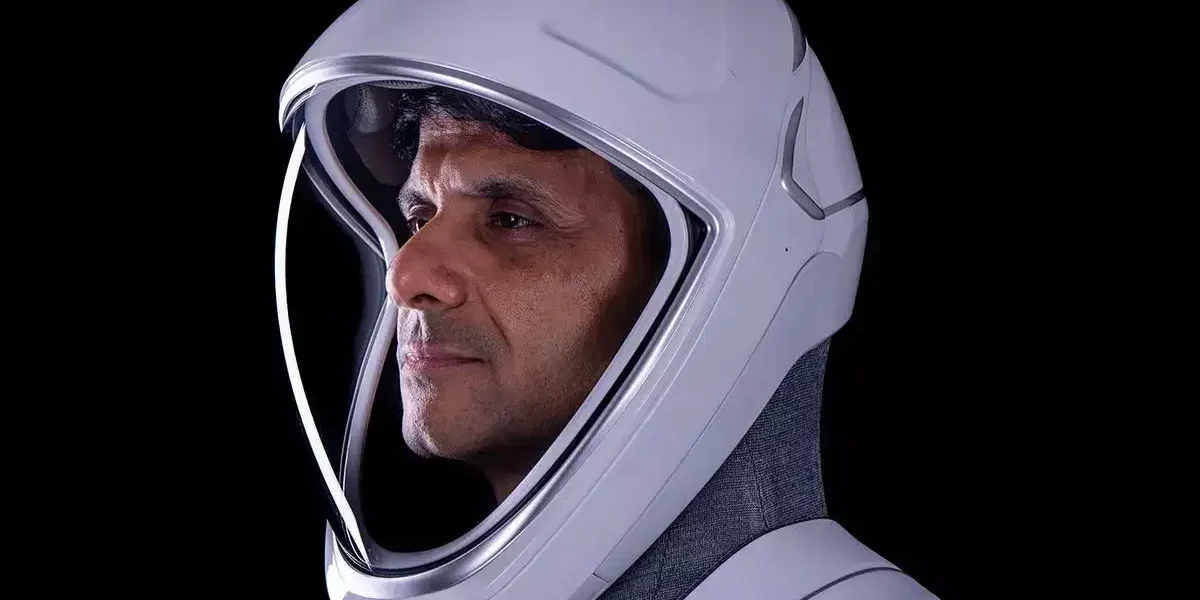India’s Time in Space: Axiom-4 Lifts Off; How Dragon Will Put Shubhanshu Shukla Inside ISS
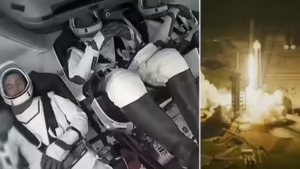
On June 25, 2025 at precisely 2:31 AM Eastern Time, the dark pre-dawn hues of Kennedy Space Center became punctuated by a blazing pillar of fire. However, this was not an ordinary rocket launch, this was the India getting back to the stars after 41 years of waiting, the shoulders were the dreams, the wings were the SpaceX Dragon.
Seated in the Dragon spaceship, the group captain Shubhanshu Shukla noticed the same rumble of the Falcon 9 that is underneath him. However, nothing could have been able to prepare him to move into this – the first Indian astronaut to captain a spacecraft into the International Space Station, and only the second Indian since the name of Rakesh Sharma flashed the skies in 1984.
Dreams of Nations Take Off

The figures do not go the whole way. This mission was successfully launched on its third attempt on 25 June 2025 06 31 UTC, but behind the clinical fact lies a history of human ambition, scientific curiosity and national pride that rages back many decades.
Shukla becomes not only an astronaut but also an icon of a changing space story of India. Being a part of the Indian Air Force as an officer and being nominated to a part of the Gaganyaan mission that is an indigenous mission to India, he seems like the transition between the current and the future of the Indian space technology. His odyssey to this milestone commenced a very long time before the rocket fires were lit; it started with a nation that was dedicated to restoring its identity amongst the space faring nations.
It did not begin to Axiom-4 easily. The mission had been delayed as its initial date of launch was May 29, 2025 but had to be delayed because of technicalities involved. However, space does not give in to hasty gestures, but rather asks to be precise, well prepared, and occasionally wise enough to wait until the right time.
The Dragon Embrace
The very SpaceX Dragon spacecraft, on which Shukla and his three fellow crew members, Commander Peggy Whitson, an experienced astronaut of NASA, and the Polish and the Hungarian, mission specialists ride, is an engineering miracle in itself. Compared to the small spaceships of the early years of space exploration, Dragon provides a rather spacious experience to its passengers during the course of their 28 hour journey to the ISS.
But why 28 hours to move only 400 kilometers? The solution is in the fine waltz of orbital physics. ISS travels around the globe at a high speed of more than 27000 kilometers per hour with an orbits period of 90 minutes. Not only will Dragon have to attain altitude of the station, but also leave the incredible speed as well as orbital path of the station with unbearable simplicity. It is similar to catching an already running train by using your train, which happen to be traveling at supersonic speed in an empty space.
The Dragon docking system is independent, and it is the best of the technologies that have been developed on spaceflights. It will autodock to the Harmony module of the station at about 7 a.m. Thursday June 26 at the space-facing port of the station. There will be no human hands directing this cosmic encounter, but only computers, sensors and the hard-earned experience that decades in the space business has taught.
More Than a Ride
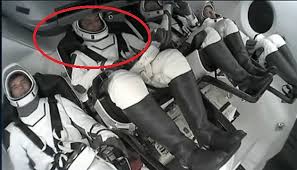
The ISS is only the beginning of a journey of many things to accomplish. He will pilot Dragon spacecraft, carry out 60 experiments including indian research on seeds, algae, muscle loss, and brain functions, and participate in interaction with students and leaders. The Astronauts of the Ax-4 quartet are expected to stay on the orbiting lab roughly 2 weeks and will perform above 60 science experiments and STEM (science, technology, engineering and math) outreach activities, which is the most events on an Axiom mission to date.
The experiments that Shukla will carry out are not mere discussions on a think tank, rather, they are the peek into the future of the people in the space. The muscle atrophy studies will assist us in knowing how to maintain the astronauts healthy when they engage in long durations on Mars. Studies of microbial adaptation would produce information on how life itself may, in the special setting of space, be transformed. One day crops resilience experiments will be feeding colonies on other planets.
However, most importantly Shukla will be a role model to young Indians who will be watching him on earth. Over his 2 week visit, he will meet students in different parts of India and bring the magic of space exploration to them, and perhaps light the fire in them that will see the next generation of space explorers.
Human Side of Space Exploration
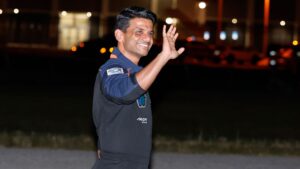
The technical details and the parameters of the mission hidden behind the value of a human being story. The trip to the space by Shukla is not merely the realization of the dream of an individual but is rather the reflection of a belief by the country that has always aspired and gazed upon the stars in wonder and hope.
The Axiom-4 training was hard and thorough. months of training at SpaceX facilities, years of training in simulators, emergency drills until they had second nature of it. Shukla was trained to become a spacecraft pilot in the way of thinking under pressure, teamwork or rather working with an international team in which building trust and communication can supposedly be the end of life and death.
The physical requirements were also very demanding. Space does not pay attention to terrestrial comforts, space is the environment, which a human body does not have a chance to adapt to. Weightlessness is romantic until you understand your bones will start decaying, your muscles will start weakening and in the end, your cardiovascular system will have to learn how to operate in zero gravity.
However, behind all the hardships there is invaluable reward. Shukla will glimpse India as no man has ever seen it before through the ISS like a jewel of civilization by the stars he will be star-like, but only because they are even more impressive because of the velvet blackness of space. He will see sunrises and sunsets at every 90 minutes and will be reminded of the utmost beauty of our home planet.
A Globe connecting Worlds
The company that arranges this mission is named Axiom Space, but it is a new phase in human exploration of the space. Axiom is working on commercial space stations and privatizing astronaut missions unlike earlier times when our space programs were dominated by the government. The Axiom-4 mission will cost an estimated 55 million a seat and it is not all about rich vacationers going on joyriding to space.
They are well organized scientific missions. The experiments that will be done on the ISS on Axiom-4 will improve the knowledge in materials science, biology, and technology that simply benefit all humankind. The acquired data will be used to design future space missions, make life on Earth better, and perhaps unclasp secrets that will change our perception of the universe itself.
In the case of India, its involvement in Axiom-4 has a number of purposes. It will indicate the increased human space-flight abilities of the country, offer a good experience towards the coming Gaganyaan program, and make India a serious contender in the new commercial space economy.
The Magic of the Technology
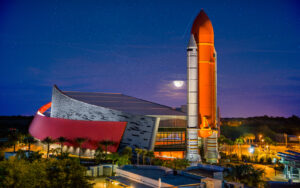
The Dragon spacecraft that took Shukla to an orbit is the testimony to the human ingenuity. It is 26.7 feet tall and 12 feet across and it is aimed to accommodate up to seven astronauts and more than 6,000 kilograms of cargo. It has a heat shield which can withstand a temperature of more than 3,000 degrees Fahrenheit as it descends back into the atmosphere of the earth at a speed in excess of 17,500 miles per hour.
However, Dragon is not only a vehicle, but also a kind of life support system, which should keep its human freight alive in the most unfriendly environment possible. The spaceship has comfortable levels of humidity and temperature, removes carbon dioxide in the air, and replaces the oxygen. It keeps track of the radiations, schemes around space junk to strike it, and keeps in constant contact with the earth.
Docking with the ISS is the work of precision. Dragon comes to the station cautiously, and matches orbit with a number of thrust burns. First there are the sensors and cameras, which piggyback the craft to within inches of the docking port, and then there is the satisfying Swiss-watch precision of saucer-sized mechanisms that pre-lock in place.
Scientific Frontiers
Experiments that will be performed by Shukla in the ISS are the frontier of the space science. Research into cognitive effects of screen consumption, microbial adjustments, muscle loss, and crop robustness in microgravity can appear dissimilar, however, they all work on the same strand of investigating adaptation of life in space.
The muscle atrophy research interests the Indian space ambitions greatly. As the country considers missions of longer duration, such as the possible lunar trips, the knowledge about how to keep the astronauts healthy becomes important. The study being undertaken on Axiom-4 will contribute directly to the future missions of India on space.
The crop resilience experiments refer to one of the most essential human needs which is called food security. As we consider putting up permanent human settlements on the Moon or the Mars, the need to have space environments where food can be produced becomes necessary. It is possible that the seeds and the plant samples that Shukla is working with could in future feed the first human colony in another planet.
Globalistic viewpoint
The political boundaries are gone when viewed at the ISS. It is an international success story in itself, the modules of the United States, Russia, Japan, and Europe all cooperating as one integrated station. The existing crew of the expedition will accept Shukla and the other companions making them a temporary society that is the best in the practice of human co-operation.
This space exploration internationally brings hope in a world that is usually divided. Astronauts do not view national boundaries in space – they look down on one small, very fragile and beautiful planet. They collaborate not due to necessity but because they are bound to wonder of space travel, which is above the earthly boundaries.
The presence of Shukla in the ISS brings out the increasing role of India in the international space collaboration. Owing to its humble start, the country has emerged as a key figure in the satellite technology, space exploration of the moon and hence human spaceflight as well. The economical strategy of India in space missions has resulted in international respect and collaboration with key space agencies across the world.
Looking Forward
The Axiom-4 mission is beyond just a one-time flight, it is a stepping stone to big space plans of India. The lessons learned during this mission will serve the Gaganyaan program, an indigenous human spaceflight program in India directly. Any process perfected, any experiment performed and any obstacle conquered contribute to the knowledge bank that will help future Indian space missions become more successful and safer.
The mission is also revolutionizing a new model of space discovery. This option is made through the cooperation with commercial companies such as Axiom Space, which makes countries able to discover space at a lower price and more often than traditional government programs housing alone would make impossible. This space democratization in terms of access provides an opportunity to countries and organizations which are not able to afford human space flight programs.
To the space community, Axiom-4 will prove how space exploration is becoming increasingly diverse. The crew consists of astronauts of various countries with their own way of thinking and scientific interests. This kind of diversity boosts space exploration by involving variations of research and problem-solving methods.
The Miracle of wonder It All
Shukla floats in the cupola of the ISS where he can see the earth turn slowly in bits and pieces, the dreams of 1.4 billion Indians in his heart. Each and every sunrise he observes, each and every experiment he executes and each and every photograph he captures is a piece of the Indian Space Heritage.
The technological prowess is amazing the accuracy of the launch, the intricacy of the docking, the intricacy of the experiments. Maybe what is even more significant is the human accomplishment: the will to dream big, the persistence of getting out of trouble, and the knowledge to work as one in order to achieve collective targets.
The exploration of space has never been only seeing new realms. It is the thing about growing human knowledge, exploring the unknown and motivating the next generations to go even further. All these are achieved by the mission of Shukla to put an end to the new chapter of Indian space story.
Now, with Dragon due to dock with the ISS in time to carry part of the dreams and aspirations of India, as well as its human cargo, we are reminded that exploration of the space is all in all about the human spirit. It is about not being willing to accept restrictions, being adventurous enough to explore the unknown and believing that beauty is out there in the universe.
The time may be over but the actual journey is only now starting. Shubhanshu Shukla will work, live and dream amid the stars in the following two weeks not only symbolizing India but also the aspirations of the entire mankind to explore, discover and develop. and hence on his homecoming he will not only carry with him the cold data and the results of the experiment, but still more valuable to civilization, the insight he possesses as to our world in the light thrown upon it by space — little, delicate, and eminently valuable.,
Axiom-4 is the next phase of the epic adventure of human space flight with its commercial associations, international collaboration, and science at the helm in a bid to stretch the limits of the achievable. In the case of India, it will be the first time in forty years that the country is taking to human spaceflight. To the rest of the world, it sends a message that the space exploration dream is not of a country but of the entire humankind.
The Dragon has brought its prized payload into orbit, and now the hard task work starts, the patient and steady work of science which will serve us all on earth, as well as gathering us into the next great step to the universe of space.

